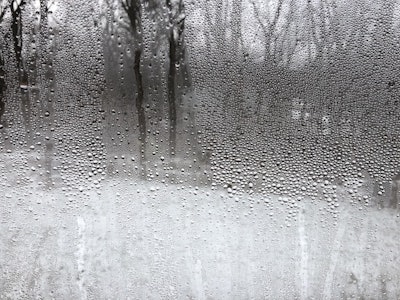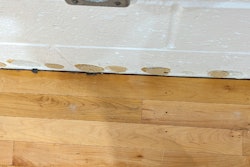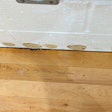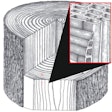
There has always been the controversy regarding relative humidity for wood floor requirements and window manufacturers in regards to window condensation. The typical wood floor manufacturer wants to have a minimum of 35% RH and generally up to 55%, even in winter. The window manufacturers want the RH to be below 30% to avoid window condensation and frost. Homeowners in cold climates find it’s difficult to get the RH with the wood flooring manufacturer’s required range without have water streaming down their windows. This battle has been going on for decades and will continue for years to come.
What is the wood flooring contractor supposed to do in the middle of this battle? There are a few simple things that can help you overcome the situation.
One is to think about how the heat is directed (or not directed) at the windows. For example, when you go out for dinner and sit at a table next to the window, if you look up at the ceiling you will typically see air supply vents approximately 8 to 10 feet apart and 6 to 8 feet from the window. The purpose of this vent location is to blow warm air down to the window and warm the surface of the glass, minimizing the potential of condensation. In the HVAC world, this is called “washing the glass,” and this is why you might have to grab a sweater or jacket while sitting there, because you might feel the cool air bouncing off the glass.
This also applies to residential properties. The window blinds can affect condensation: If the window blinds are open, with the front of the blades higher than the back, the heat boxes off the blades and never reaches the glass to increase surface temperature. If the blinds are open with the front of the blades lower than the back, they will catch the warm air rising forcing the heat to the glass and increasing surface temperature, minimizing condensation. Screens mounted on the inside of window frames block the warm air from reaching the glass. For that reason, screens should be removed during the winter season and allow the warm air to the increase the window glass temperature.
 Typical recommendations for relative humidity levels during winter temperatures.
Typical recommendations for relative humidity levels during winter temperatures.
There are times when outdoor temperatures drop below 10 degrees, and the interior RH must also decline for condensation purposes. However, if the HVAC system has proper controls for humidity recovery during the day when temperature rises above 10 degrees, no wood moisture content will have been lost.
These are just a few helpful hints to help the installer better understand window condensation and wood flooring requirements. In many cases, the HVAC contractor does not have the system programmed for auto recovery. When you have humidity concerns, better educate yourself, ask the right questions and educate the homeowner, too.

































